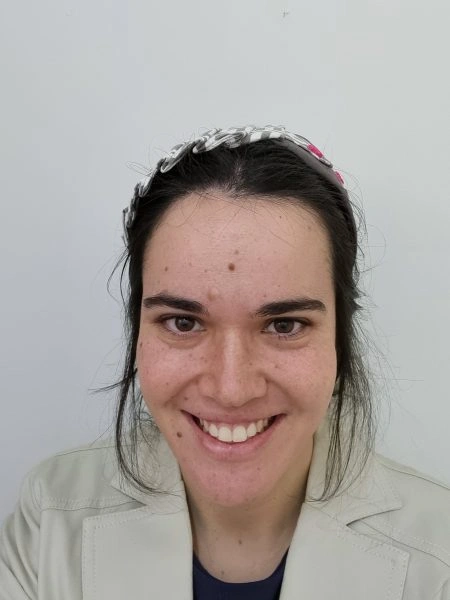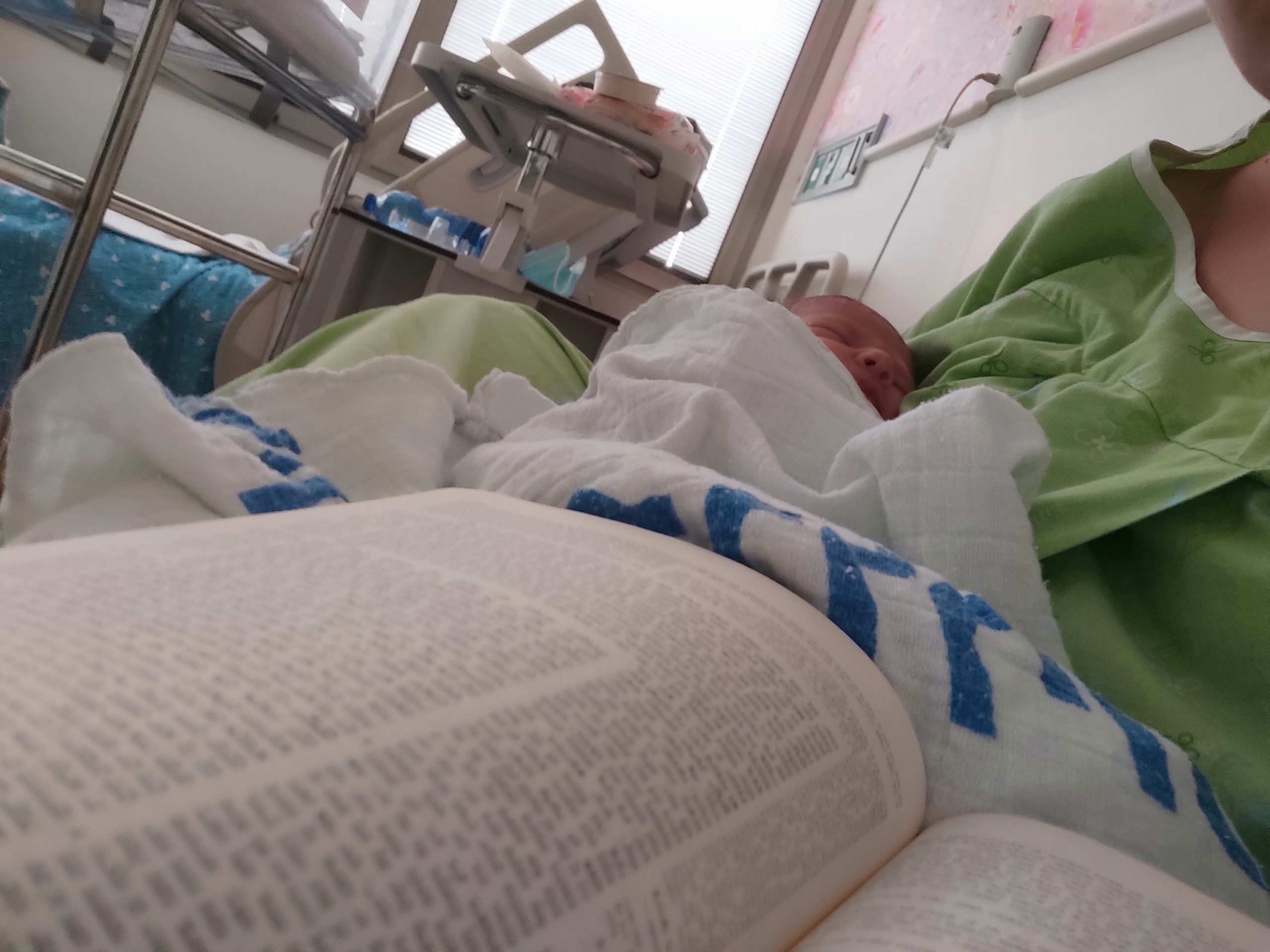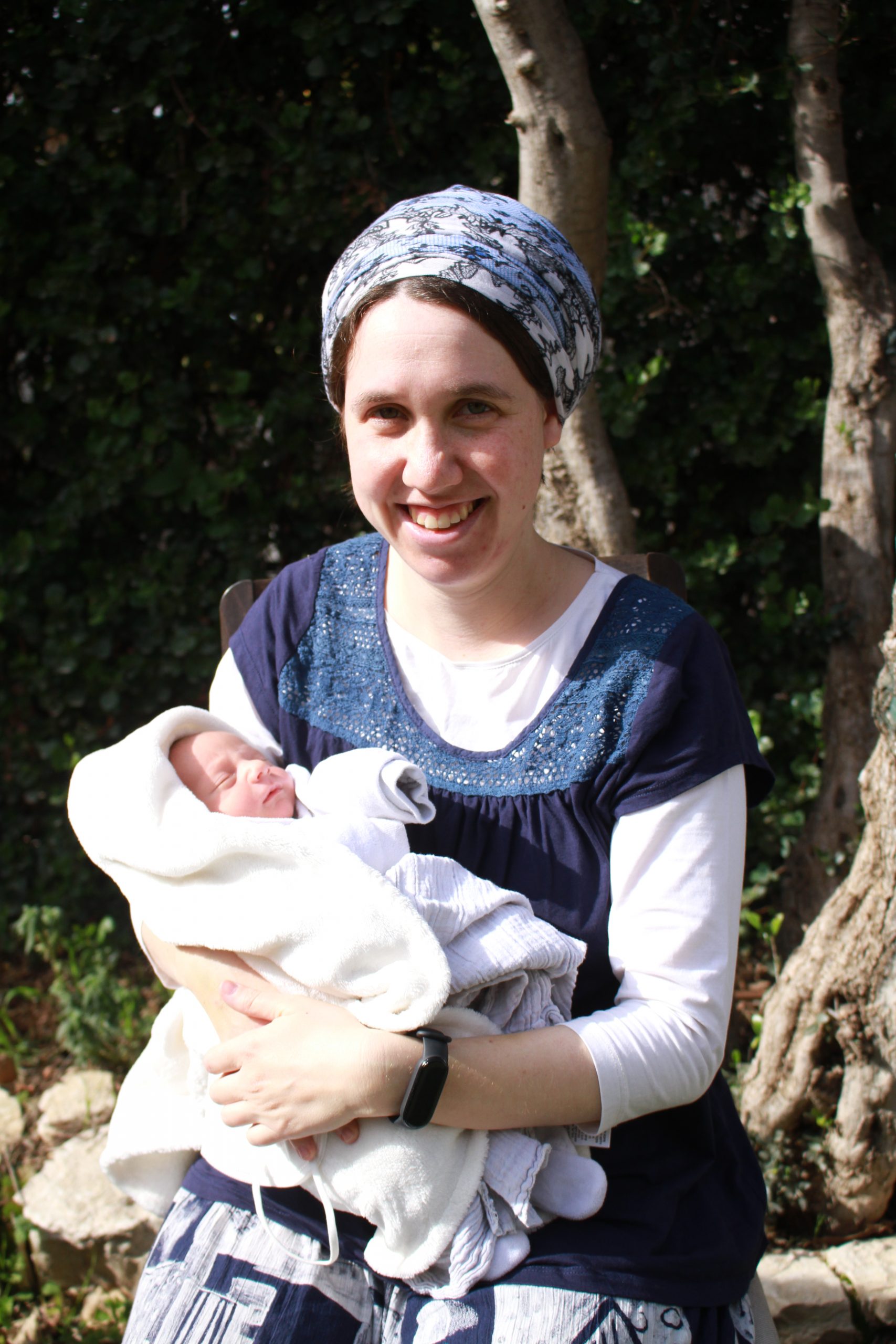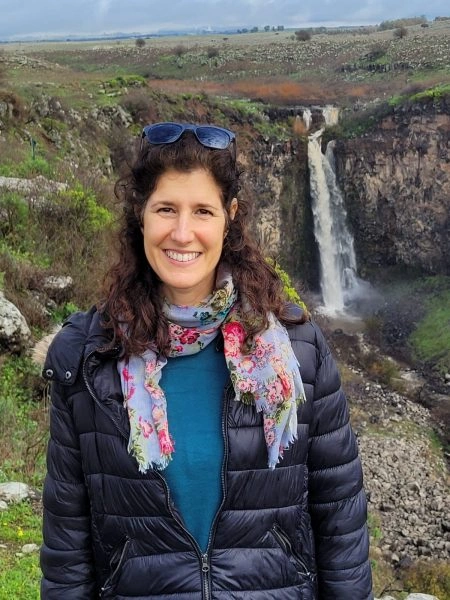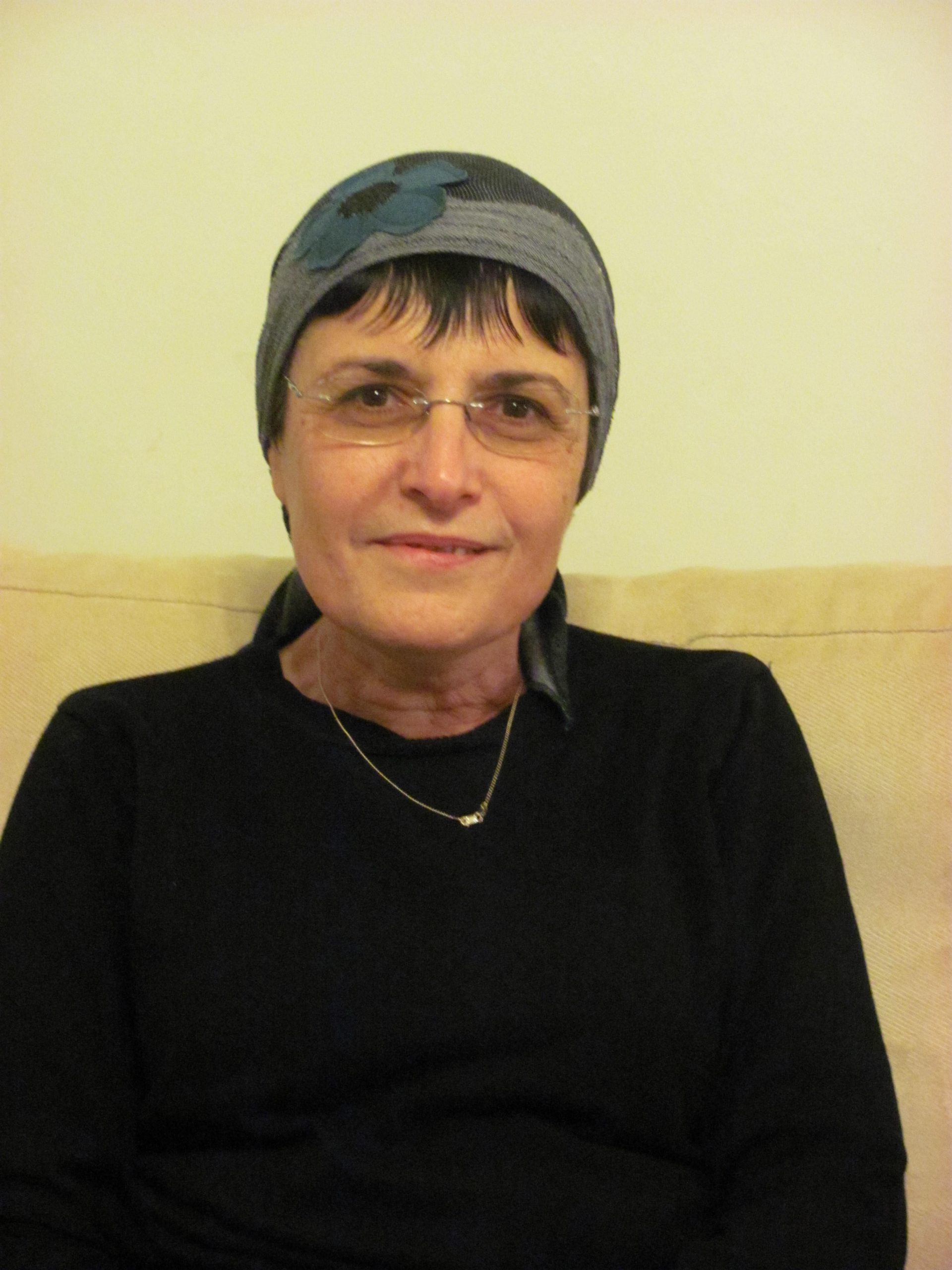הגמרא דנה בדברי ריש לקיש שאמר שלאחר ששחט את הקנה (ולפני הוושט) וניקבה הריאה, הבהמה כשרה לאכילה. האם זה נכון גם לבני מעיים או רק לריאות שחיותם קשורה לקנה? האם שחיטה עצמה מכשירה את הבמה לקבל טומאה? אם חושבים שלא, אז רק אם יצא דם יוכשר לקבל טומאה ואסור לאכול על ידי ידיים טמאות. הגמרא דנה באיזה מקרה מדובר? אם בחולין, כיון שידיים שניות לטומאה, אין להם שום השפעה על חולין כי רק תרומה וקדשים נטמאים על ידי שני? וגם מוכחים מלשון המשנה שלא מדובר בקדשים. אז מה מהמקרה?
לימוד השבוע מוקדש ע”י טינה לם לע”נ יצחק מאיר בן הרב צבי אריה ואסתר בתיה.
רוצים להקדיש למידה? התחל כאן:
לימוד השבוע מוקדש ע”י טינה לם לע”נ יצחק מאיר בן הרב צבי אריה ואסתר בתיה.
העמקה
רוצה להבין מה באמת קורה מתחת לפני השטח של הסוגיה?
שיעורים, פודקאסטים והרחבות של מיטב המורות שלנו יפתחו לך עוד זוויות וכיווני חשיבה.
חדשה בלימוד הגמרא?
זה הדף הראשון שלך? איזו התרגשות עצומה! יש לנו בדיוק את התכנים והכלים שיעזרו לך לעשות את הצעדים הראשונים ללמידה בקצב וברמה שלך, כך תוכלי להרגיש בנוח גם בתוך הסוגיות המורכבות ומאתגרות.
פסיפס הלומדות שלנו
גלי את קהילת הלומדות שלנו, מגוון נשים, רקעים וסיפורים. כולן חלק מתנועה ומסע מרגש ועוצמתי.
חולין לג
מי מצטרף סימן ראשון לסימן שני לטהרה מידי נבלה או לא
The Gemara clarifies this dilemma: Does the first siman join together with the second siman to purify the animal from the impurity of an unslaughtered carcass or not? In both cases the dilemma is: Does the cutting of the first siman, which serves the dual purpose of being a component of permitting consumption and preventing impurity of the animal, join together with the cutting of the second siman, which serves only the purpose of preventing impurity, in order to constitute a single act of slaughter and thereby prevent the animal from assuming the impurity of an unslaughtered carcass? Or perhaps because the cutting of each siman is performed for a different purpose they do not join together?
עד כאן לא איבעיא לן אלא לטהרה מידי נבלה אבל באכילה אסורה
In any event, we raise the dilemma only in order to purify the foreleg from the impurity of an unslaughtered carcass. But with regard to eating the slaughtered animal, all agree that it is forbidden, as even Rabbi Zeira concedes that the animal is a tereifa and retracts his objection to the distinction that Rava proposed between the lungs and the innards.
א”ל רב אחא בר רב לרבינא דלמא לעולם לא הדר ביה ור’ זירא לדבריו דרבא קאמר וליה לא סבירא ליה
Rav Aḥa bar Rav said to Ravina: Perhaps Rabbi Zeira actually did not retract his opinion, as even initially he held that there is no distinction between lungs and innards. If either is perforated after one siman was cut, the animal is a tereifa. And Rabbi Zeira stated his objection to the distinction of Rava in accordance with the statement of Rava, but he himself does not hold accordingly.
אמר רב אחא בר יעקב שמע מינה מדר’ שמעון בן לקיש מזמנין ישראל על בני מעיים ואין מזמנין עובדי כוכבים על בני מעיים
The Gemara continues its analysis of the statement of Reish Lakish, who said that after the windpipe is cut, the lung is considered as though it was placed in a basket, and if it is perforated before the slaughter is completed, the animal does not become a tereifa. Rav Aḥa bar Yaakov said: Learn from the statement of Rabbi Shimon ben Lakish that one may invite Jews to eat the innards of an animal that was slaughtered, but one may not invite gentiles to eat the innards of an animal that was slaughtered, because they are forbidden to gentiles.
מאי טעמא ישראל דבשחיטה תליא מילתא כיון דאיכא שחיטה מעלייתא אישתרי להו עובדי כוכבים דבנחירה סגי להו ובמיתה תליא מילתא הני כאבר מן החי דמו
What is the reason? For Jews the matter of rendering the meat of the animal fit for consumption is dependent upon the performance of a valid act of slaughter. Once there is full-fledged slaughter and both simanim are cut, the innards are permitted to them even if the animal is convulsing. But with regard to gentiles, for whom stabbing is sufficient and slaughter is not required, the innards are permitted only after the animal is completely dead, since the matter of rendering the meat of the animal fit for consumption is dependent upon its death. Therefore, if the animal is still convulsing, these innards, which are considered to be outside the body after the cutting of the two simanim, are considered like a limb from a living animal and it is forbidden for gentiles to eat them.
אמר רב פפא הוה יתיבנא קמיה דרב אחא בר יעקב ובעי דאימא ליה מי איכא מידי דלישראל שרי ולעובד כוכבים אסור ולא אמרי ליה דאמינא הא טעמא קאמר
Rav Pappa said: I was sitting before Rav Aḥa bar Yaakov and I sought to say to him that his statement is difficult: Is there anything that is permitted for a Jew but prohibited for a gentile? But I did not say that to him, as I said to myself: Didn’t he say a reason for his ruling? Therefore, there is no reason to ask the question.
תניא דלא כרב אחא בר יעקב הרוצה לאכול מבהמה קודם שתצא נפשה חותך כזית בשר מבית השחיטה ומולחו יפה יפה ומדיחו יפה יפה וממתין לה עד שתצא נפשה ואוכלו אחד עובד כוכבים ואחד ישראל מותרין בו
The Gemara notes: It is taught in a baraita not in accordance with the opinion of Rav Aḥa bar Yaakov: One who seeks to eat from the meat of an animal before its soul departs may cut an olive-bulk of meat from the area of the slaughter, the neck, and salt it very well, i.e., more than is normally required, and rinse it very well in water to remove the salt and the blood, and wait until the animal’s soul departs, and eat it. It is permitted for both a gentile and a Jew to eat it. Contrary to the statement of Rav Aḥa bar Yaakov, there is no distinction between Jew and gentile.
מסייע ליה לרב אידי בר אבין דאמר רב אידי בר אבין אמר ר’ יצחק בר אשיאן הרוצה שיבריא חותך כזית בשר מבית שחיטתה של בהמה ומולחו יפה יפה ומדיחו יפה יפה וממתין לה עד שתצא נפשה אחד עובד כוכבים ואחד ישראל מותרין בו:
This baraita supports the statement of Rav Idi bar Avin, as Rav Idi bar Avin says that Rav Yitzḥak bar Ashyan says: One who seeks to recuperate from an illness should cut an olive-bulk of meat from the area of slaughter, i.e., the neck, of an animal, and salt it very well, and rinse it very well, and wait until the animal’s soul departs, and eat it. It is permitted for both a gentile and a Jew to eat it.
מתני׳ השוחט בהמה חיה ועוף ולא יצא מהן דם כשרים ונאכלין בידים מסואבות לפי שלא הוכשרו בדם ר’ שמעון אומר הוכשרו בשחיטה:
MISHNA: In the case of one who slaughters a domesticated animal, an undomesticated animal, or a bird, and blood did not emerge from them during the slaughter, all of these are permitted for consumption and do not require the ritual washing of the hands as they may be eaten with ritually impure [mesoavot] hands, because they were not rendered susceptible to ritual impurity through contact with blood, which is one of the seven liquids that render food susceptible to impurity. Rabbi Shimon says: They were rendered susceptible to ritual impurity by means of the slaughter itself.
גמ׳ טעמא דלא יצא מהן דם הא יצא מהן דם אין נאכלים בידים מסואבות אמאי ידים שניות הן ואין שני עושה שלישי בחולין
GEMARA: The reason that they may be eaten with ritually impure hands is that blood did not emerge from the animals or birds during the slaughter; but if blood emerged from them during slaughter, they may not be eaten with ritually impure hands. The Gemara asks: Why not? Ordinary hands are impure with second-degree ritual impurity and an item of second-degree impurity cannot impart third-degree impurity to non-sacred items with which it comes into contact.
וממאי דבחולין עסקינן דקתני חיה דאילו קדשים חיה בקדשים מי איכא ותו אי בקדשים כי לא יצא מהן דם כשרה הוא עצמו לדם הוא צריך
The Gemara clarifies: From where is it ascertained that we are dealing in the mishna with non-sacred food, and not with the slaughter of an offering? That is clear, as the tanna teaches in the list of those slaughtered: An undomesticated animal. As, if the tanna is referring to the slaughter of sacrificial animals and birds, is there any undomesticated animal included in the framework of sacrificial animals? And furthermore, if the tanna is referring to sacrificial animals, when no blood emerges from them are the offerings valid? The offering itself requires blood, as it is only through the presenting of the blood upon the altar that the offering is accepted.
ותו אי בקדשים כי יצא מהן דם מי מכשיר והאמר ר’ חייא בר אבא אמר רבי יוחנן מנין לדם קדשים שאינו מכשיר שנאמר (דברים יב, טז) על הארץ תשפכנו כמים דם שנשפך כמים מכשיר שאינו נשפך כמים אינו מכשיר
And furthermore, if the tanna is referring to sacrificial animals, when blood emerges from them, does it render them susceptible to ritual impurity? But doesn’t Rabbi Ḥiyya bar Abba say that Rabbi Yoḥanan says: From where is it derived that the blood of sacrificial animals does not render food susceptible to ritual impurity? It is derived from a verse, as it is stated: “You shall not eat it; you shall pour it upon the earth like water” (Deuteronomy 12:24). Blood of a non-sacred animal, which is poured like water when it is slaughtered, renders food susceptible to ritual impurity. By contrast, blood of a sacrificial animal, which is not poured like water but is presented on the altar, does not render food susceptible to ritual impurity.
ותו אי בקדשים כי לא יצא מהם דם לא מתכשרי ליתכשרי בחיבת הקדש דקיי”ל חיבת הקדש מכשרתן
And furthermore, if the tanna is referring to sacrificial animals, when blood does not emerge from them are they not nevertheless rendered susceptible to ritual impurity? Let them be rendered susceptible to ritual impurity by means of regard for sanctity, as we maintain that regard for sanctity renders food suceptible to ritual impurity even in the absence of contact with any of the seven liquids.
א”ר נחמן אמר רבה בר אבוה הכא בחולין שלקחן בכסף מעשר עסקינן ודלא כר”מ דתנן
Rav Naḥman said that Rabba bar Avuh said: Here we are dealing with non-sacred food that one purchased in Jerusalem with second-tithe money, which assumes the status of the second-tithe produce. This produce, in turn, assumes third-degree impurity through contact with hands that have second-degree impurity. And this mishna is not in accordance with the opinion of Rabbi Meir, as we learned in a mishna (Para 11:5):
כל הטעון ביאת מים מדברי סופרים מטמא את הקדש ופוסל את התרומה ומותר בחולין ובמעשר דברי ר”מ
With regard to anything that by rabbinic law requires entry into water, i.e., either immersion or ritual washing of the hands, although it is pure by Torah law, it is accorded second-degree impurity. Therefore, such an item renders sacrificial food impure, meaning that the sacrificial food becomes impure and transmits impurity to other sacrificial food, and disqualifies teruma, meaning that it renders the teruma itself impure, but not to the extent that the teruma can render other teruma impure. And it is permitted for non-sacred food and for second-tithe produce to come in contact with such an item, and no impurity is thereby transmitted. This is the statement of Rabbi Meir.
וחכמים אוסרים במעשר
And the Rabbis prohibit items that require entry into water from coming in contact with second-tithe produce, as they hold that the produce is thereby rendered impure. According to the Rabbis, the status of second-tithe produce is more stringent than that of non-sacred food, and second-tithe produce assumes third-degree impurity upon contact with an item of second-degree impurity, which is in accordance with the opinion of the mishna.
מתקיף לה רב שימי בר אשי ממאי דלמא עד כאן לא פליגי רבנן עליה דרבי מאיר אלא באכילת מעשר אבל בנגיעה דמעשר ואכילה דחולין לא פליגי
Rav Shimi bar Ashi objects to this interpretation of that mishna. From where is it clear that it is contact that the Rabbis prohibit? Perhaps the Rabbis disagree with Rabbi Meir only with regard to a person with second-degree impurity partaking of second-tithe produce. But with regard to contact of an individual with second-degree impurity with second-tithe produce or his eating non-sacred food, they do not disagree.
והא נגיעה היא מדקתני נאכלין בידים מסואבות מי לא עסקינן דקא ספי ליה חבריה
And this case in the mishna is a case involving contact with the flesh of the slaughtered animal, from the fact that it teaches: They may be eaten with ritually impure hands, in the passive form, and not: One may eat them with impure hands. Are we not dealing with a case where another with impure hands fed him, but the one eating it was ritually pure and did not touch it? Therefore, the case in the mishna here, which indicates that it is forbidden for one with impure hands to touch the flesh if it has come in contact with the blood, cannot be referring to an animal purchased in Jerusalem with second-tithe money. The reason is that in that case, the Rabbis concede that contact with second-tithe produce, even produce rendered susceptible to ritual impurity by the blood, is permitted for one whose hands are impure with second-degree ritual impurity.
אלא אמר רב פפא הכא בידים תחלות עסקינן ורבי שמעון בן אלעזר היא דתניא אין ידים תחלות לחולין רבי שמעון בן אלעזר אומר משום רבי מאיר ידים תחלות לחולין ושניות לתרומה
Rather Rav Pappa said: Here, in the mishna, we are dealing with hands that are impure with first-degree ritual impurity, which render even non-sacred food impure. And the mishna is in accordance with the opinion of Rabbi Shimon ben Elazar, as it is taught in a baraita: In those cases where hands have first-degree impurity, it is not that they render non-sacred food impure; rather, it means that they impart to teruma and sacrificial food second-degree impurity rather than third-degree impurity. Rabbi Shimon ben Elazar says in the name of Rabbi Meir: In those cases where hands have first-degree impurity, it means that they render non-sacred food impure. And in those cases where hands have second-degree impurity it means that they invalidate teruma and impart to it third-degree impurity.
תחלות לחולין אין לתרומה לא הכי קאמר תחלות אף לחולין שניות לתרומה אין לחולין לא
The Gemara asks: Did Rabbi Shimon ben Elazar say that in those cases where hands have first-degree impurity, with regard to non-sacred food, yes, they render it impure, but with regard to teruma, hands do not render it impure? The Gemara answers: This is what Rabbi Shimon ben Elazar is saying: In those cases where hands have first-degree impurity, it means that they render even non-sacred food impure, and all the more so they render teruma impure. But in those cases where hands have second-degree impurity, it means that with regard to teruma, yes, the hands invalidate teruma and impart third-degree impurity, but with regard to non-sacred food, hands do not render it impure.
ומי איכא ידים תחלות אין דתניא הכניס ידיו לבית המנוגע ידיו תחלות דברי רבי עקיבא וחכמים אומרים ידיו שניות
The Gemara asks: And are there cases where hands assume first-degree impurity? The Gemara answers: Yes, as it is taught in a mishna (Yadayim 3:1): If one inserts his hands into a leprous house (see Leviticus 14:33–53) his hands assume first-degree impurity as though his entire body entered the house; this is the statement of Rabbi Akiva. And the Rabbis say: His hands assume second-degree impurity.
דכולי עלמא ביאה במקצת לא שמה ביאה והכא בגזירה ידיו אטו גופו קא מיפלגי
The Gemara elaborates: Everyone agrees that in principle, partial entry into a leprous house is not characterized as entry in terms of rendering one who enters impure. Therefore, one who inserted his hands into the house is not impure by Torah law. And here, it is with regard to a rabbinic decree that renders his hands impure that they disagree: The Sages issued a decree that if one inserted his hands into a leprous house, his hands are impure due to the impurity by Torah law that one assumes when he enters the house with his entire body. The objective of the decree is to prevent him from entering the leprous house.
מר סבר ידיו כגופו שוינהו רבנן ומר סבר ידים כידים דעלמא שוינהו רבנן
One Sage, Rabbi Akiva, holds that when the Sages issued the decree they determined that the status of his hands inserted into the house is like the status of his body that enters the house, first-degree impurity. And one Sage, the Rabbis, holds that the Sages rendered the status of hands inserted into the house like the status of hands in general, with regard to which they issued a decree of second-degree impurity, even if they had been washed.
ולוקמה כרבי עקיבא דאמר ידיו תחלות הויין דלמא כי קאמר רבי עקיבא הני מילי בתרומה וקדשים דחמירי אבל לחולין שניות הויין
The Gemara asks: And why did Rav Pappa interpret the mishna in accordance with the opinion of Rabbi Shimon ben Elazar? Let Rav Pappa interpret the mishna in accordance with the opinion of Rabbi Akiva, who says: If one inserts his hands into a leprous house, his hands assume first-degree impurity. The Gemara answers: Perhaps when Rabbi Akiva says that one’s hands assume first-degree impurity, that statement applies only in cases of teruma and sacrificial food, which are stringent. But with regard to non-sacred food, perhaps hands are impure only with second-degree impurity.
וליהויין נמי שניות דהא שמעינן ליה לר”ע דאמר שני עושה שלישי בחולין
The Gemara objects: And let hands also be impure only with second-degree impurity and the mishna could still be in accordance with the opinion of Rabbi Akiva. As we heard that Rabbi Akiva says: An item of second-degree impurity imparts third-degree impurity to non-sacred items.
דתנן בו ביום דרש רבי עקיבא (ויקרא יא, לג) וכל כלי חרש וגו’ יטמא טמא לא נאמר אלא יטמא לטמא אחרים לימד על ככר שני שהוא עושה שלישי בחולין
As we learned in a mishna (Sota 27b): On that day, when Rabbi Elazar ben Azarya was appointed Nasi in Yavne, Rabbi Akiva taught: “And every earthenware vessel into which any of them falls, whatever is in it shall be impure, and you shall break it” (Leviticus 11:33). With regard to the item rendered impure in the vessel, it is not stated: It is impure [tameh]; rather, the term “it shall be impure [yitma]” is stated, indicating that the item has the capacity to transmit impurity to other items. This verse teaches about a loaf with second-degree impurity that had been rendered impure in the airspace of an earthenware vessel in which there was a creeping animal, that through contact it renders non-sacred food impure with third-degree ritual impurity.
דלמא הני מילי בטומאה דאורייתא אבל בדרבנן לא
The Gemara explains: Perhaps this statement, that non-sacred food becomes impure with third-degree ritual impurity, applies only with regard to impurity by Torah law, e.g., a creeping animal; but with regard to impurity by rabbinic law, e.g., impurity of hands, that is not the halakha.
אמר ר”א א”ר הושעיא הכא בחולין שנעשו על טהרת הקדש עסקינן ודלא כרבי יהושע דתניא רבי אליעזר אומר האוכל אוכל ראשון ראשון שני שני שלישי שלישי
Rabbi Elazar said that Rabbi Hoshaya said a third explanation of the mishna: Here we are dealing with a case of non-sacred food items that were prepared on the level of purity of sacrificial food. And the mishna is not in accordance with the opinion of Rabbi Yehoshua, as it is taught in a mishna (Teharot 2:2): Rabbi Eliezer says: One who eats food with first-degree ritual impurity assumes first-degree impurity. One who eats food with second-degree ritual impurity assumes second-degree impurity. One who eats food with third-degree impurity assumes third-degree impurity.
רבי יהושע אומר האוכל אוכל ראשון ושני שני שלישי שני לקדש ואין שני לתרומה
The mishna continues: Rabbi Yehoshua says: One who eats food with first-degree or second-degree impurity assumes second-degree impurity. One with second-degree impurity who comes into contact with teruma disqualifies it, but does not render it impure. One who eats food with third-degree impurity assumes second-degree impurity vis-à-vis sacrificial food, i.e., his contact with sacrificial food renders it impure with the capacity to transmit impurity to other sacrificial food, but does not assume second-degree impurity vis-à-vis teruma, and his contact with teruma does not disqualify it.
בחולין שנעשו על טהרת תרומה
Eating an item that has third-degree impurity is feasible only in the case of non-sacred food, as partaking of impure teruma or sacrificial food is prohibited. Generic non-sacred food cannot contract third-degree impurity at all. Therefore, the case of one who eats food that has third-degree impurity is referring specifically to non-sacred food items that were prepared on the level of purity of teruma.
על טהרת תרומה אין על טהרת הקדש לא קסבר חולין שנעשו על טהרת הקדש לית בהו שלישי
The Gemara infers from Rabbi Yehoshua’s statement that if one prepares items as if their level of purity were on the level of purity of teruma, then yes, they have the status like teruma, but if one prepares items as if their level of purity were on the level of purity of sacrificial food, they do not have the status like sacrificial food, and such items would not contract third-degree impurity. This indicates that Rabbi Yehoshua holds that non-sacred food items that were prepared on the level of purity of sacrificial food do not assume third-degree impurity.
ולוקמה
The Gemara objects: Let us interpret the mishna



























